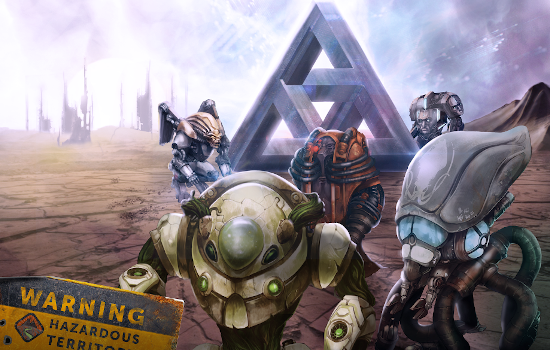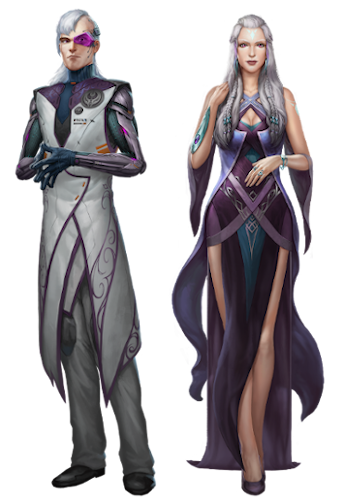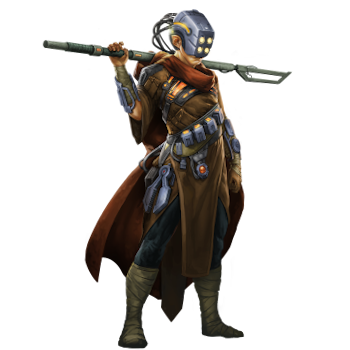Anachrony
2020. February 14.

It was early April in 2016 when I joined Mindclash Games. Anachrony was about to hit Kickstarter and I was there to support the preparations of the campaign. The first thing I had to do was to delve deep into the game, learn how to play it and get familiar with the world as much as possible. The game wasn’t fully finished at that time of course, but it was already a living, breathing universe, big enough to easily get lost in for long hours. I remember how much I liked that the game was deeply thematic and everything that happened in it made perfect sense. This attitude quickly became one of the biggest reasons why I like to be a part of Mindclash Games: the team always pushes itself to the limits until everything falls into place both theme- and mechanism-wise.
If you’ve played any of our games, you may have noticed that we put a lot of effort into the lore and universe creation. Take any of our game worlds and you’ll soon discover that they don’t just exist to support the mechanics--they are alive. These worlds are shaped by their own history; they are full of marvelous places, landscapes and cities; the characters have their own personality, motives, and background; and they are brought to life by our team of creative artists.

So, back to Anachrony. In June, 2016, Anachrony closed a successful campaign on Kickstarter and after a brief celebration, we quickly threw ourselves back into work. It happened to be my job to finish writing the missing characters and the incomplete parts of Path backgrounds. The identity, the culture and the foundations of the society of each Path were all laid down by that time, so I just had to wrap them up; however, most of the Leaders were still waiting for their backstory to be written. I wrote characters before when I was the DM for the RPGs I used to play, but writing the Leaders and their relationships for Anachrony was a whole different story. I aimed to make them interesting, iconic, glorious and sometimes heroic, but also vulnerable and human, who make mistakes and suffer tragedies. My goal was to make them as alive as possible, so when the game hit the market and I had to bid them farewell, they could manage on their own, far away from my desktop...
When the idea of Fractures of Time became an actual project, I was really happy that I could return to the dystopian future of New Earth. But when the blinking mechanism and the new Path came into picture, the task to expand the lore slowly became more and more challenging. First of all, we had to figure out how we can introduce a fifth Path when everything was set up along the original four. We liked the idea that the Path of Unity and its Leaders came from the future, so we didn’t mess up the history, but we still had to figure out who they were and how they were able to travel to our present.
Besides introducing a new faction, we were also faced with the challenge of incorporating the blinking mechanism (which allows players to use their already placed Exosuits) into the story. It worked perfectly as a gameplay mechanism, but many questions arose about what really happened in the game world. What is blinking exactly? How does it work? These questions eventually led us to the concept of the Fracture Device, which basically created small time loops so people could be in two places at once (just like Hermione, when she was using the Time Turner necklace in Harry Potter and the Prisoner of Azkaban). This explained why the same Exosuit could be used twice. Furthermore, since the resource that made the Fracture Device work (now called Flux) could be harvested on a brand new location, we also had to figure out the whole story of the Amethynia Valley, its residents, and their relationship with the other Paths, especially with Unity.


Oh, and don’t forget the third Leader for all the original Paths, who ended up coming from different alternate timelines. Since Unity had its Triumvirate, we had to add an additional Leader to each Path. It was the series of puzzle games we played together with our backers during the Fractures of Time Kickstarter campaign that basically defined how they joined the game’s continuity: with the help of a modified Fracture Device, these new Leaders were recruited from other timelines to defeat the dreaded Chronossus, the new solo mode’s automa. I enjoyed writing these characters the most, because of the strength and hope they represent in the face of adversity. Even if they ultimately failed to save their world, they kept on fighting to save ours.
I believe we managed to integrate the world of Fractures of Time into the Anachrony universe with the care it deserved, but in the end, it will be you, dear players, who will decide how we succeeded, when you finally get to read the new, expanded Art & Story Book of Anachrony.
Every now and then we ask ourselves here at MCG: does all this effort put into the theme and the lore really worth it? Wouldn’t a little less be still enough next time? Well, yeah, probably. But that just wouldn’t be us, right? Because this is what we do.
We design and develop games--and we create worlds.
Until next time,
Frigyes